PADELVIC: Multicamera videos and motion capture data in padel matches
Padel scientific journal, Vol. 2(1), 2024
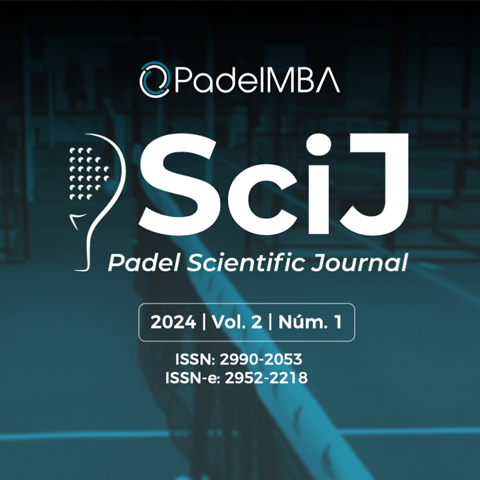
Recent advances in computer vision and deep learning techniques have opened new possibilities regarding the automatic labeling of sport videos. However, an essen-tial requirement for supervised techniques is the availability of accurately labeled training datasets. In this paper we present PadelVic, an annotated dataset of an ama-teur padel match which consists of multi-view video streams, estimated positional data for all four players within the court (and for one of the players, accurate motion capture data of his body pose), as well as synthetic videos specifically designed to serve as training sets for neural networks estimating positional data from videos. For the recorded data, player positions were estimated by applying a state-of-the-art pose estimation technique to one of the videos, which yields a relatively small positional error (M=16 cm, SD=13 cm). For one of the players, we used a motion capture system providing the orientation of the body parts with an accuracy of 1.5º RMS. The highest accuracy though comes from our synthetic dataset, which provides ground-truth po-sitional and pose data of virtual players animated with the motion capture data. As an example application of the synthetic dataset, we present a system for a more accurate prediction of the center-of-mass of the players projected onto the court plane, from a single-view video of the match. We also discuss how to exploit per-frame positional data of the players for tasks such as synergy analysis, collective tactical analysis, and player profile generation.
VR4Health: Personalized teaching and learning anatomy using VR.
Journal of Medical Systems, 2020
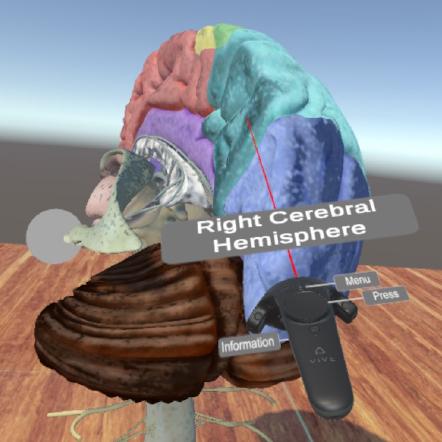
Virtual Reality (VR) is being integrated into many di erent areas of our lives, from industrial engineering to video-games, and also including teaching and education. We have several examples where VR has been used to engage students and facilitate their 3D spatial understanding, but can VR help also teachers? What are the bene ts teachers can obtain on using VR applications? In this paper we present an application (VR4Health) designed to allow students to directly inspect 3D models of several human organs by using Virtual Reality systems. The application is designed to be used in an HMD device autonomously as a self-learning tool and also reports information to teachers in order that he/she becomes aware of what the students do and can redirect his/her work to the concrete necessities of the student. We evaluate both the students' and the teachers' perception by doing an ex- periment and asking them to ll-in a questionnaire at the end of the experiment.
Virtual Reality to teach anatomy
Eurographics Proceedings Education Paper, 2017
PDF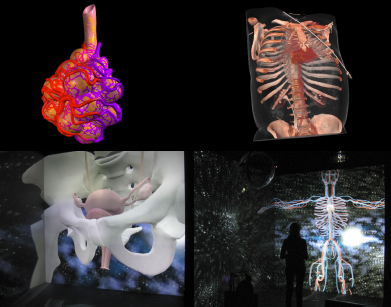
Virtual Reality (VR) and Augmented Reality (AR) have been gradually introduced in the curriculum of schools given the benefits they bring to classical education. We present an experiment designed to expose students to a VR session where they can directly inspect 3D models of several human organs by using Virtual Reality systems. Our systems allow the students to see the models directly visualized in 3D and to interact with them as if they were real. The experiment has involved 254 students of a Nursing Degree, enrolled in the Human anatomy and physiology course during 2 years (2 consecutive courses). It includes 10 3D models representing different anatomical structures which have been enhanced with meta-data to help the students understand the structure. In order to evaluate the students’ satisfaction facing such a new teaching methodology, the students were asked to fill in a questionnaire with two categories. The first one measured whether or not, the teaching session using VR facilitates the understanding of the structures. The second one measured the student’s satisfaction with this VR session. From the results we can see that the items most valuated are the use of the activity as a learning tool, and the satisfaction of the students’ expectations. We can therefore conclude that VR session for teaching is a powerful learning tool that helps to understand the anatomical structures.
Multiscale Acquisition and Presentation of Very Large
Journal on Computing and Cultural Heritage (JOCCH), Vol. 3(4), 2011
PDF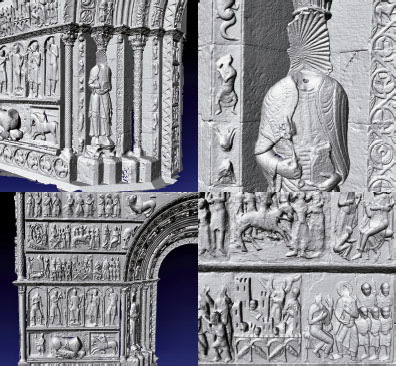
La dicotomía entre una representación con gran detalle y la gestión eficiente de los datos digitalizados sigue siendo un gran problema en el contexto de la adquisición y visualización de objetos 3D, especialmente en el campo del patrimonio cultural. Los dispositivos de adquisición modernos permiten adquirir geometría muy detallada, pero es muy difícil aplicar esta tecnología para adquirir artefactos muy grandes. En este artículo se presenta un proyecto para reconstruir virtualmente el impresionante Portal (7 x 11 m.) del Monasterio de Ripoll, España. El monumento fue adquirido mediante la tecnología de escaneo láser por triangulación, produciendo un conjunto de datos de 2212 capturas creando un total de más de 1 billón de triángulos. Se describen todos los pasos del proyecto completo, desde el sistema de adquisición hasta la instalación final para su difusión al público. Se demuestra cómo los datos adquiridos con un escáner láser de tiempo de vuelo pueden ser utilizados para acelerar el proceso de alineación. Además mostramos como, después de la creación de un modelo y la reparación de las imperfecciones, una instalación immersiva e interactiva permite al público navegar y mostrar una representación muy detallada de la portalada. Este artículo muestra, como gracias a una programación cuidadosa y eficaz con la ayuda de los algoritmos, ahora es posible, preservar y visualizar información muy detallada, incluso para superficies muy grandes.
Portalada: A Virtual Reconstruction of the Entrance of the Ripoll Monastery
3DPVT08: Fourth International Symposium on 3D Data Processing, Visualization and Transmission, 2008
PDF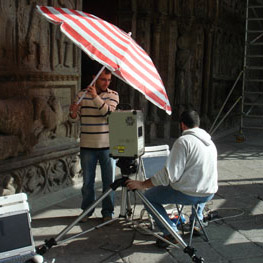
La dicotomía entre una representación con gran detalle y la gestión eficiente de los datos digitalizados sigue siendo un gran problema en el contexto de la adquisición y visualización de objetos 3D, especialmente en el campo del patrimonio cultural. Las nuevas tecnologías ofrecen la posibilidad de adquirir la geometría muy detallada, pero muy a menudo es muy difícil procesar la cantidad de datos producidos. En este trabajo se presenta un proyecto que tiene por objeto la reconstrucción de la impresionante (7x11 m.) Portalada del Monasterio de Ripoll, España. El monumento fue adquirido mediante la tecnología de escaneo láser por triangulación, produciendo un conjunto de datos de 2212 capturas creando un total de más de 1 billón de triángulos. Se describen todos los pasos del proyecto completo, desde el sistema de adquisición hasta la instalación final para su difusión al público. Se demuestra cómo los datos adquiridos con un escáner láser de tiempo de vuelo pueden ser utilizados para acelerar el proceso de alineación. Además mostramos como, después de la creación de un modelo y la reparación de las imperfecciones, una instalación immersiva e interactiva permite al público navegar y mostrar una representación muy detallada de la portalada. Este artículo muestra, como gracias a una programación cuidadosa y eficaz con la ayuda de los algoritmos, ahora es posible, preservar y visualizar información muy detallada, incluso para superficies muy grandes.
Real-Time Exploration of the Virtual Reconstruction of the Entrance of the Ripoll Monastery
CEIG Conference Proceedings, 2008
PDF
En este trabajo se presenta el proyecto de la reconstrucción virtual y la inspección de la "Portalada" la entrada del monasterio de Ripoll. En una primera etapa, el monumento de 7 x 11 metros fue adquirido mediante la tecnología de escaneo láser por triangulación, produciendo un conjunto de datos de más de 2000 mapas de superficie para un total de más de mil millones de triángulos. Después de la alineación y registro, se produjo un modelo digital completo de triángulos reparado de unos 173M y una densidad de muestreo del orden de un milímetro. El artículo describe la adquisición del modelo y su construcción, el uso de algoritmos específicos escalables para la simplificación y reparación del modelo, y se centra en el diseño de una estructura de datos jerárquica para la gestión de datos y la vista dependiente de navegación de este enorme conjunto de datos, en un PC. Por último, se describe la configuración de un sistema funcional, fácil de usar y immersivo que induce a una percepción de presencia a los visitantes.